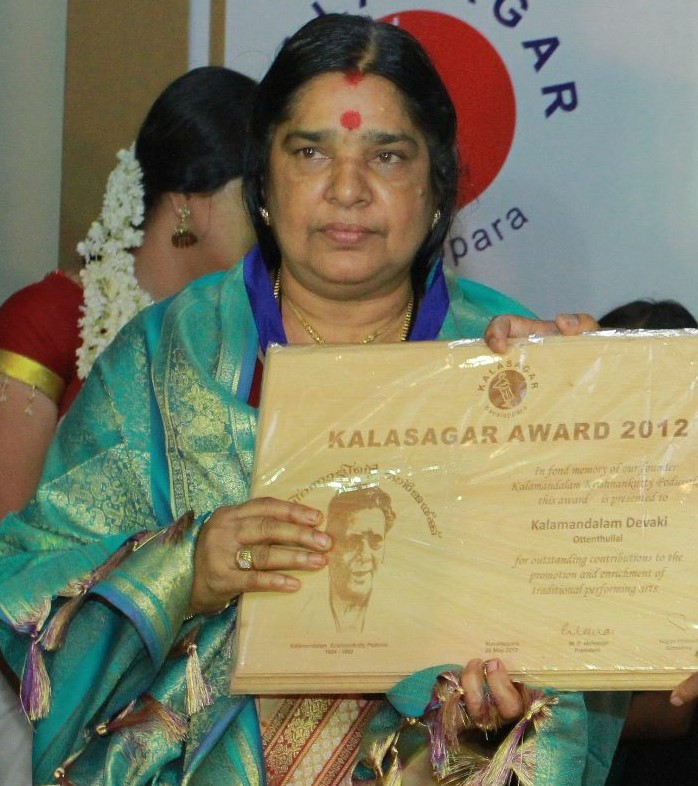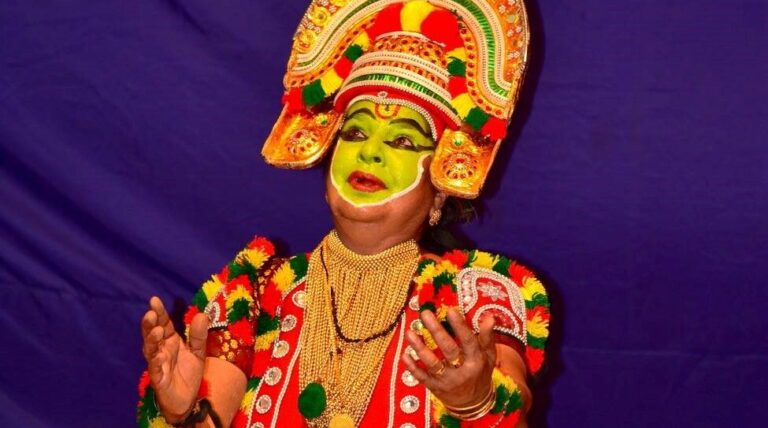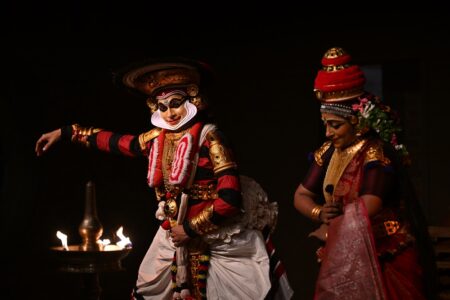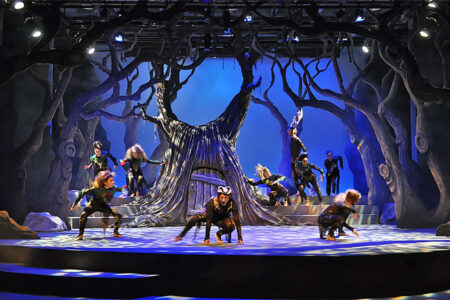Kalamandalam Devaki made history six decades ago by becoming the first female to dance Kerala’s Ottanthullal as a professional.
Exit of Kalamandalam Devaki from real life yesterday morning is an irreparable loss to the art of Thullal as well as the Kerala cultural firmament. She was 76. As the first female student in the department of Thullal at Kerala Kalamandalam, who was courageous enough to enter a male dominated bastion, Devaki was widely respected and honoured.
A native of Nelluvai near Wadakkanchery, she was more disposed towards dance and her father, Kadambur Damodaran Nair wanted her to join Kalamandalam. But as she was older by six years, she could not get admission. But she was advised by Malabar Kannan Nair to join the Thullal department breaking all conventions in 1960. That was a turning point in her life.
The classes began with ‘mey sadhakam’ from seven in the morning along with the dance students. Evening classes included mudras, ‘kannu sadhakam’, storytelling, ‘abhinayam’ etc. Classes in Sahithya, Sanskrit, Attakatha sahithya etc were also there. While knowledge of mudras was essential, their application was not as elaborate as in Kathakali. The stories in which Thullal students were trained included Pathra Charitam, Kiratam, Kalyanasougandhikam, Pulunthimoksham and Rugminiswayamvaram. Of these Kalyanasougandhikam was Seethankan thullal and Pulinthimoksham, Parayan thullal. Girls were not allowed to perform Parayan Thullal.
As for Devaki, Kiratam turned her forte because it embraced delineation of all rasas. Further Kiratam stands out because of its structural finesse just like the Kottayam plays in Kathakali, she had said once. A Thullal student who has mastered Kiratam could perform all other plays with ease. She was allowed to learn dance on Saturdays and Sundays. Later she also was trained in Kathakali by Kalamandalam Ramankuttty Nair. Devaki completed the Thullal course in 1964.
Thereafter Devaki turned a busy artiste staging Thullal both in India and abroad. As for the Kalamandalam troupe she was indispensible, being a good dancer as well. Naturally she was the first female Thullal artiste to perform abroad. Milena Salvin’a Mandapa was the venue in Paris. She served her alma mater for three years.
Beating the odds
But there was a rethinking of continuing the performances after marriage with Kalamandalam Narayanan Nair, the maddalam maestro. But it was his unstinted support that promoted her performances later. Also veterans like Dr K N Pisharody, Iyyancode Sreedharan and Killimangalam Vasudevan Namboothiripad persuaded her to continue in the field.

Her husband was in Mrinalini Sarabhai’s Darpana in Gujarat where, as advised by the great danseuse, she learnt Kuchipudi and presented performances. Poet Sugathakumari was a great fan of Thullal and after watching one of her performances in Tripunithura opined that her artistry was on a par with that of the legend of Thullal, Malabar Raman Nair. She also acted in the film ‘Njattadi’ along with Bharath Gopi and Bharath Murali. But did not pursue that career more.
A path breaker
An acclaimed authority of the art form, Devaki was instrumental in preparing the norms for competitions of the Kerala State Youth Festival. According to her, Thullal demands a high degree of coordination of several factors like vachika and angika abhinaya along with rhythmic perfection. As for rhythms, there are a variety of them peculiar to the art form that has been immortalized by Kuchan Nambiar. These have to be mastered. She is sore that only very few girls opt for Thullal and even those who come out of the institution discontinue performances after marriage.
Her students are a legion. Among her foreign students is Harry, a German national who still is famous in his own country. He took pains in translating the plays to German language so that they are intelligible to his own men. This has won enough popularity for the art form in that country.
As for the accolades she had won, she was honoured in 1965 soon after completing her studies at Thunchanparambu by K P Kesava Menon. The much reputed awards from Kerala Sangeetha Nataka Akademi, Kalamandalam and Kunchan Smarakam followed later.
She used to say that for her the true award is her fans across the country who throng the venue of her performance always.





1 Comment
Well-deserved tribute